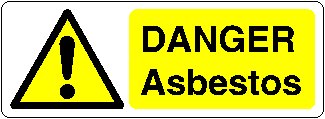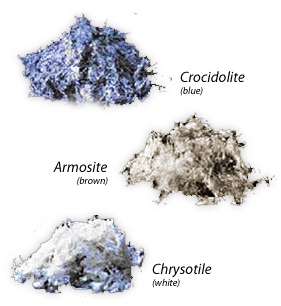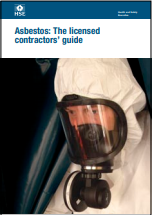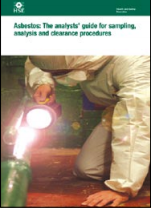FREE Quality, Health and Safety, and HR Business Software Click <HERE> to Learn More and Download
THIS SITE CONTAINS NO GOOGLE OR SIMILAR TYPE ADS and NO CLICK BAIT LINKS
QHSE Support >(Site Map) Health & Safety Guidance > Asbestos in the Workplace >
Asbestos Management

All asbestos kills: blue, brown and white.
Make no bones about it asbestos is bad; it is the single biggest occupational work-related killer in Britain today. Asbestos related diseases are the cause of around 4000 deaths each year, and it's expected to continue to rise for years, before peaking in around 2020 at approximately 10,000 deaths per annum before eventually declining.
IOSH article on long terms dangers asbestos: Asbestos legacy warning
For free practical resources visit No Time to Lose: asbestos - an IOSH article on the huge global toll from work-related exposure to asbestos.
There is no medical cure for asbestos related diseases some of which are listed below;
Asbestosis or fibrosis - this causes scarring of the lung tissue which reduces the efficiency of the lungs and leads to difficult and painful breathing. Strain on the heart can lead to death by heart failure
Asbestos induced cancer of the bronchus - cancer of the major air passages to the lungs, often occurs together with Asbestosis
Mesothelioma - relatively rare form of cancer affecting the linings of the pleural or peritoneal cavities
Pleural disease - calcification of the lungs and pleural effusion (fluid on the lungs)
Asbestos itself is a naturally occurring fibrous mineral with good heat / insulating properties, once considered a miracle material, it was widely used during the industrial years before its dark secret eventually saw it's use in almost all applications and trades banned in 1985. Asbestos work in Britain is now largely restricted to its removal.
There were three main types of asbestos in general use;
chrysotile (white) - Chrysotile has been used more than any other type and accounts for most of the asbestos found in buildings today. It is highly flexibility with good heat resistant properties, making it ideal for use in cement and roofing materials,
armosite (brown) - amosite is a particularly strong and heat-resistant, used frequently as a fire retardant in thermal insulation products,
crocidolite (blue) - crocidolite was used for insulation lagging and sprayed coatings, for thermal insulation purposes as well as fireproofing. This type of asbestos was also banned in many countries in 1985, and is the most dangerous to human health
All three types can cause asbestos related diseases, however brown and blue are generally considered to be significantly more hazardous than white.
Blue (crocidolite) and brown (amosite) asbestos were banned in 1985. White (chrysotile) asbestos was not included in this initial ban, it was not until 1999 another 15 years later before chrysotile (white) was finally banned. The 2012 Control of Asbestos Regulations state that owners of non-domestic buildings (e.g., factories and offices) have a "duty to manage" asbestos on the premises by making themselves aware of its presence and ensuring the material does not deteriorate, removing it if necessary.
Also see the following guidance on sampling and removal of asbestos.
|
HSG 247 - Asbestos: The licensed contractors guide |
HSG 248 - Asbestos: The analysts' guide for sampling, analysis and clearance procedures |
Help file v1.175.0619 : Copyright © 2024 Brian G. Welch MSc(QHSE), NVQ4(OH&S), CMIOSH - Supported by Website On Safe Lines



